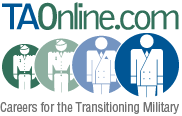Title:The New Rules for Successful Job Search Today
Author:Susan P. Joyce, © 2016 All rights reserved
Date:April 2016
Source:workcoachcafe.com
The new rules for a successful job search are not difficult to understand or to follow. But, these rules have changed substantially from those in the past. Most of the reason for these changes is that employers recruit in new ways.
Those changes in recruiting, largely focused on new and increased use of technology, have dramatically changed the unwritten rules we have always followed for finding a new job.
Five New Rules for Successful Job Search
To understand what works today for successful job search, follow the new rules below.
-
Be easy to find and hire.
Recruiters are in a hurry. Most internal recruiters are typically measured on "time-to-hire" or "time-to-fill" metrics — how fast they fill the jobs they have open. If it is not clear who you are (avoid name confusion with someone else) or that you are actually qualified for their job, they don't have time to figure it out. They move on to the next candidate.
Solution:
Your qualifications need to be clear and obvious, easy for people in a hurry to see with very little effort. Keep your resumes and applications focused on the opportunity you are seeking.
- Make sure your LinkedIn Profile uses the same name as your resume and applications (so recruiters can "connect the dots" between the two).
- Keep your resumes/applications and LinkedIn Profile "in sync."
- Leverage the additional space that LinkedIn makes available to provide more detail that supports the claims on your resumes/applications.
For more information, read How to Get Noticed by External Recruiters and To Be Hired, Be Found Where Recruiters Look. To avoid name confusion, read Ego Surfing or Smart Self-Defense.
-
Don't be generic.
I've talked with so many job seekers who "don't want to be pigeon-holed." They are "open to anything" and "don't want to limit my options." They believe that being flexible offers them more opportunities.
These are the folks who use a vague identity like "Marketing Professional" or "Unemployed." This generic approach is a waste of time, energy, and electrons.
Those recruiters-in-a-hurry don't waste their time searching
Google or LinkedIn using generic terms, like "marketing professional."They search for people with a specific job title like a "social media marketing analyst." They also search for people with specific skills for that job, like someone skilled in "user reach and engagement through Facebook, Twitter, LinkedIn, and Pinterest."
Solution:
Focus your LinkedIn Profile and resumes on your target job. Yes, pick one NOW! You can change your mind later (and change your LinkedIn Profile and resumes).
Focus provides the essential elements needed for success today allowing:
- Creation of a strong LinkedIn Profile that showcases your accomplishments and qualifications.
- Participation in the right LinkedIn Groups for your profession/field, industry, location, and employers.
- Inclusion of the right keywords in your LinkedIn Profile.
Keywords are how and why you are found by recruiters and employers searching in LinkedIn or their internal applicant tracking system ("ATS"). They are the search terms used by the recruiters and sourcers looking for qualified job candidates.
Keywords are NOT generic. They are specific to the opportunity being filled. Those terms — the job titles and skills required for those jobs — are the keywords essential for today.
For more information, read To Be Hired, Be Found: Your Best Keywords.
-
Target your job search to specific employers.
When you focus your job search only on the open jobs you find on job boards, you face the greatest competition you can possibly have. You also are limited to the jobs and employers in your job board search results.
So, too much competition and too narrow a choice of employers. Not good!
Solution:
If you don't have a target list of employers, develop it. Now. This list helps you focus your networking and usually makes you more successful.The list can be as large as 20 or 40 potential employers, and can change over time as you learn more about them or find better employers.
Start your list by looking around at local employers, asking friends and family, and researching online. Who are the best employees in your area?
Once you have a list of target employers, you can focus your networking efforts and research on those employers. You'll be more successful and more apt to be one of the lucky referred job candidates vs. one of the crowd of job applicants.
For more on how to be referred, read To Be Hired, Be Referred for the Job.
-
Don't be visibly nasty or rude online.
Too many people seem to think that the famous First Amendment to our Constitution — which guarantees "freedom of speech" — means they can be as mean, nasty, rude, and profane online as they want with no fear of repercussions. This shows a lack of understanding on many levels.
The First Amendment means that the government cannot make a law which limits our speech. It doesn't mean that other citizens (and non-citizens) cannot judge us by what we make public online — particularly in LinkedIn and other social media.
Recent studies have shown that employers do Google job applicants before hiring them. And, if you think the person receiving or viewing rude and nasty comments doesn't "judge" the perpetrator, you're completely wrong.
Solution:
Simply "play nice" as your mother and your grammar school teachers tried to teach you. Being rude and nasty is not usually appealing in a job candidate. In fact, it often eliminates the nasty person from consideration. Who wants to hire and/or work with a nasty person? No one.
If you absolutely must be rude, use a different name than the name you use for your job search.
-
Leverage the technology to network.
Because networking is the most effective method of finding a job, invest more time in networking than in responding to job ads.
Solution:
Today, you have many tools to help you with your networking, and technology is a primary solution for most of us.
Fortunately, we have many options:
- Find old friends and colleagues (even former bosses) on Facebook. It has over 1.4 billion users, worldwide. Search, "friend," and re-connect.
-
LinkedIn currently has over 400,000,000 members world-wide:
- Use the "advanced" people search (top of every page) to track down people you knew in your past.
- Use the "company" search to find people you worked with in the past, if you can't find them in the people search.
- Use the "Find Alumni" link (currently in the "My Network" drop-down list) to find people you went to school with.
- Don't forget to make yourself find-able on social media, particularly LinkedIn and Facebook so members of your network can find you when they are looking.
Bottom Line
It's too easy to spend time searching through job boards for your next job. All that searching and applying feels productive. But, in most cases, it is a waste of time, and too easy to do sloppily. Follow the new rules to job search success!
More About the New Rules for Successful Job Search

